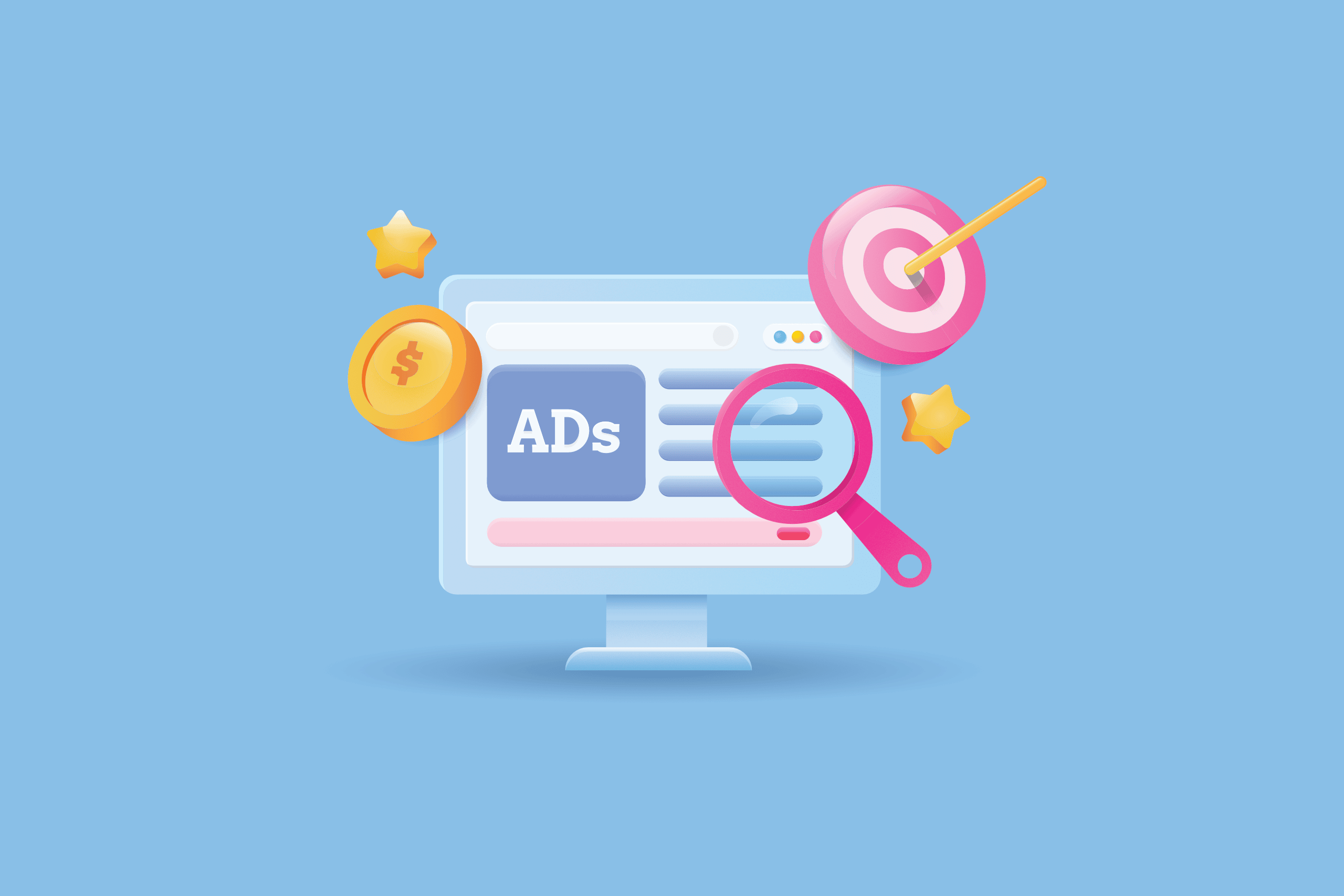An encyclopedia salesman walks into a newspaper office and asks to take out a full-page ad…

In the golden days of advertising, the transaction between advertiser and publisher was pretty simple: An advertiser would approach a publisher and request to have their advert appear in a publication like a magazine or on prime TV, where it might be seen by millions of eyes.
For generations, this approach worked nicely for both parties. Publishers could charge big money for premium advertising slots, and advertisers could shift units by the ton by showing off their products’ features, advantages and benefits to the masses.
But things changed around the turn of this century as businesses began to harness the power of digital, and advertising—just like everything else—moved online.
This move has added layers upon layers of complexity to the picture. Where a real-world advertising transaction might consist of an advertiser, creative team, ad buyer and publisher, an entire ecosphere has sprung up around digital advertising.
More players are now involved in the ad buying/selling process than ever—across an increasing number of digital platforms.
But the most significant paradigm shift is how everyone involved can leverage audience data to generate high-performing, laser-focused campaigns.
How Data Has Changed Advertising
An encyclopedia salesman walks into a newspaper office and asks to take out a full-page ad… “But here’s the thing,” he says. “I only want the ad to be seen by readers who’ve visited a library in the last year. I won’t pay for unread ads, and I want your best rates…”

The old approach of putting ads in front of as many eyes as possible was a little like carpet bombing: effective but indiscriminate (and therefore expensive). Short of advertising in niche publications, there was very little brands could do to ensure their collateral was seen by the right eyes.
But data has changed this. The arrival of browser cookies and digital fingerprinting technologies allows advertisers to gather unparalleled insight into their audiences’ demographic data, intent, interests and more.
Crucially they can use that data to have their ads seen by a carefully selected market segment—and only that segment.
As advertisers and publishing platforms reap the benefits of targeted advertising in the digital realm, a host of platforms have sprung up, promising to make the process more efficient and allow everyone in the advertising ecosystem to deliver improved value and increased engagement.
The name given to this technology that offers digital advertisers unparalleled control over which viewer sees which ads—and at what price—is adtech.
Let’s take a closer look.
What is Adtech?
You’ve probably guessed that adtech is a compounded abbreviation of advertising technology. It’s the name of a group of technologies that allow advertisers to analyse audience data and create and deliver targeted campaigns.

In addition to helping brands throw out the carpet bombing approach to product awareness, adtech tools also connect advertisers with publishers and help both parties navigate the increasingly complex ad buying/selling landscape that’s sprung up online.
The Adtech Ecosphere
Adtech can generally split into demand-side (for advertisers) and supply-side (for publishers) platforms. However, the digital advertising landscape is a much more complex space than the newspaper office in which our salesman and ad-man shook hands earlier, with an array of parties and players facilitating and mediating the core advertiser/publisher relationship.
Advertisers
In the example so far, the advertiser would be our encyclopedia salesman. He has a product to sell and wants to show off its benefits to a selected audience at the lowest possible cost.
He achieves this through a demand-side platform (DSP), where he can design, run and adjust campaigns to target his identified audience. He can also retarget previously engaged users and—if he’s to make full use of his DSP—run a full-funnel, omnichannel marketing campaign.
Publishers
In the adtech ecosphere, the publisher (our ad man) accesses his adtech tools through a supply-side platform (SSP) linked to an ad exchange, where he can sell advertising slots while gathering crucial audience and engagement data.
Ad Exchanges
DSPs and SSPs may be connected by an ad exchange. The ad exchange helps advertisers leverage audience data to design targeted campaigns while ensuring the publisher receives the best possible rate for their ad space. They’ll usually take a share of generated revenue for doing so.
Ad Networks
Ad networks purchase and resell ad space in bundles to help advertisers achieve broader coverage.
Ad Agencies
Ad agencies help brands promote their products and services by managing ad campaigns on their behalf. They may delve deep into audience data to match advertisers with the best media and ad networks and oversee campaign budgets and creative work.
Content Delivery Networks (CDNs)
The content delivery network is a distributed network of servers and data centres that optimise the load speed of displayed ads. CDNs use caching—storing temporary copies of files—in servers close to the user’s location where access is faster. CDNs are especially useful for video advertisements which often comprise large file sizes that can impact performance.
Ad Servers
Ad servers show the most relevant ads from the CDN based on user data. Ad servers also collect data such as impressions and click-thru rates to help advertisers monitor performance and refine their campaigns.
Buying Ads—Programmatic Vs Real-Time Bidding
Back in our newspaper office, our fictional encyclopedia salesman and ad man might be amid intensive negotiations over a couple of whiskey sours as they discuss circulation figures and haggle over rates for full-page or Skybus displays.
But things work differently online, where publishers skip the cocktails and get straight to business through programmatic ad buying.
The process can refer to direct programmatic buying or real-time bidding (RTB).
Programmatic direct buying is similar to the process in the newspaper office: The advertiser and publisher get together to agree on a fixed price for the ad space and cost per mile (CPM)—the average cost of 1000 impressions.
The programmatic part kicks in afterwards when the various parts of the adtech ecosphere come together to run the ad until the campaign objectives have been achieved (or the budget runs dry).
Much more common these days is RTB, where advertisers bid on space—usually through an exchange. It means publishers can sell space without striking up formal working relationships with their advertisers and can vary the price of ads according to demand.
Benefits of Adtech
So now we know what adtech is, what about the advantages and benefits for advertisers and publishers? There must be more than one reason why the sector is poised to grow in value by more than double to $1tn by 2030.
Segment and Conquer
Our encyclopedia hawker had no choice but to advertise his wares to the broadest possible swathe of the public in the hope his ideal audience would notice his ads.
But that’s not the case for digital advertisers, who can choose to show content to only a selected audience with similar interests and is therefore more likely to result in a conversion. Advertisers can also direct varied campaigns at several market segments simultaneously.
Better Budgeting
The ability to segment and target specific audiences takes advertisers away from the carpet bombing approach of old. And because they only pay for impressions or clicks, adtech gives advertisers unprecedented budgetary control and efficiency.
Monitor, Tweak, Repeat
Adtech platforms advertisers and publishers oodles of data about ad performance, which they can use to refine and optimise campaigns. It means brands can make data-driven predictions about campaign performance before launch and fine-tune their efforts as they go along to constantly improve performance.
The Time Saver
Automated adtech platforms and tools make short work of tasks like data analytics, ad buying, and audience segmentation—work that would be prohibitively time and labour-intensive for teams of humans to carry out. Even for rough and ready campaigns, adtech removes an enormous amount of legwork and time, allowing advertisers to focus on campaign creatives and ongoing optimisation.
Freshen Your Dental Ad Campaigns

Adtech is a revolution in the advertiser/publisher relationship. And for practice owners with the time to set up, monitor and refine campaigns, it’s also a revolution in the patient acquisition process.
But not all principles have the patience or bandwidth to roll up their sleeves and dive into the bewildering world of SSPs, DSPs, DCNs and CPMs.
That’s where we come in.
From ad design to bid optimisation and campaign reporting and refinement, The Fresh agency provides full support for your Adtech campaign—with full dental expertise built-in.
So, are you ready to grow scale with online campaigns from The Fresh?
Get in touch to find out what our team could do for you.

